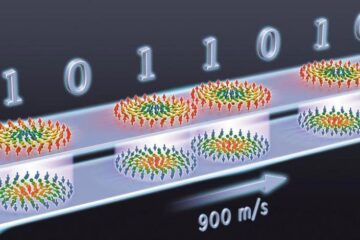Novel coatings combine protection with colour effects

New coloured protective coatings offer the same corrosion and wear protection as colourless coatings while their colouration opens new opportunities. Red could for instance be used as a warning colour on surfaces which can get very hot.
The new possibilities from combining protection and colour in such coatings will be demonstrated by INM – Leibniz Institute for New Materials at this year’s Hannover Fair from 13 to 17 April as an exhibitor at the leading Research & Technology trade fair (stand B46 in hall 2).
“Incorporating coloured pigments in nanocomposites make coatings possible which are not only protective but also deliver additional visual information via their colouration,” explains Peter William de Oliveira, head of the IZI – Innovation Center INM.
A protective coating for surfaces of ovens, chimneys or certain automotive parts could be coloured red for instance. So such parts would not only be protected from corrosion, wear and oxidation but at the same time also be distinctive to the consumer by virtue of their colour.
To create a full red shade without brown content, INM researchers are currently working on ceramic particles with red pigments free from iron oxide. Chemical compounds previously used were not very suitable for such applications.
“Organic compounds do make for very nice reds – but they are unsuitable for such protective coatings, since organics do not survive high temperatures,” explains the physicist de Oliveira, “Iron oxides do withstand high temperatures when used as colouring particles for reds, but do not give full reds.”
Black coloured coatings with a thickness of two to five micrometres can withstand temperatures up to 900 degrees Celsius, but also coatings with a reddish brown colour with resistance can endure up to 500 degrees Celsius. INM researchers are also developing protective coatings using blue and green pigments. Current developments at INM enable the use of these coloured glass-ceramic layers on metals and glasses. The pigments are incorporated in sol-gel nanocomposites and applied by dipping or spraying.
Your expert at the INM:
Dr. Peter William de Oliveira
INM – Leibniz Institute for New Materials
Head Optical Materials
Head IZI – Innovation Center INM
Phone: +49681-9300-148
peter.oliveira@inm-gmbh.de
izi@inm-gmbh.de
Your contacts at the stand B46 in hall 2:
Dr. Thomas Müller
Dr. Michael Opsölder
INM conducts research and development to create new materials – for today, tomorrow and beyond. Chemists, physicists, biologists, materials scientists and engineers team up to focus on these essential questions: Which material properties are new, how can they be investigated and how can they be tailored for industrial applications in the future? Four research thrusts determine the current developments at INM: New materials for energy application, new concepts for medical surfaces, new surface materials for tribological systems and nano safety and nano bio. Research at INM is performed in three fields: Nanocomposite Technology, Interface Materials, and Bio Interfaces.
INM – Leibniz Institute for New Materials, situated in Saarbrücken, is an internationally leading centre for materials research. It is an institute of the Leibniz Association and has about 210 employees.
Weitere Informationen:
Media Contact
All latest news from the category: Trade Fair News
Newest articles

Properties of new materials for microchips
… can now be measured well. Reseachers of Delft University of Technology demonstrated measuring performance properties of ultrathin silicon membranes. Making ever smaller and more powerful chips requires new ultrathin…

Floating solar’s potential
… to support sustainable development by addressing climate, water, and energy goals holistically. A new study published this week in Nature Energy raises the potential for floating solar photovoltaics (FPV)…

Skyrmions move at record speeds
… a step towards the computing of the future. An international research team led by scientists from the CNRS1 has discovered that the magnetic nanobubbles2 known as skyrmions can be…





















